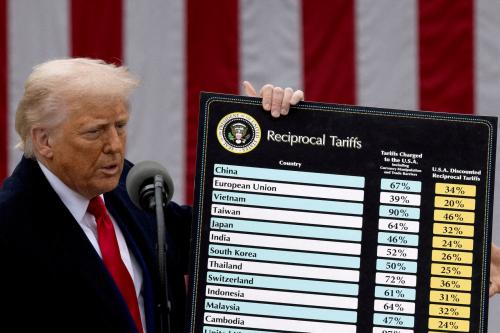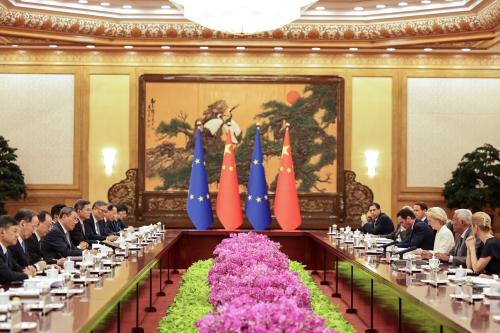North Korea sometimes employs deceit in its continuing struggle with its adversaries (the United States, South Korea, et al.). But sometimes it is remarkably transparent and explicit in saying what it wants and what it will and will not do. A case in point is what it means by the term “denuclearization.” That is, of course, the stated objective of Washington, Beijing, Seoul, Tokyo, and Moscow. It is an essential element of any negotiation with Pyongyang, through the Six-Party Talks or any other diplomatic venue. But recently, this passage appeared in Choson Sinbo, a Korean-language newspaper in Japan that speaks for the North Korean leadership. This is what it said about denuclearization:
When the National Defense Commission proposed the measures to prevent a nuclear disaster, it definitely stated that the denuclearization of the Korean Peninsula is “the common goal of the [Korean] nation.” The goal is not “the North’s giving up of the nuke.” The denuclearization that should be realized with the power of the entire nation is the denuclearization of the entire Korean Peninsula including South Korea; the key point here is to end the nuclear threat of the United States against the DPRK.
The important proposal suggests a concrete method of collaboration between the North and the South for denuclearization: the South Korean authorities should take the position that they will no longer introduce the means of nuclear strike of the United States into South Korea and its surrounding areas. In the joint military exercises of the United States and South Korea staged throughout the year, a lot of strategic bombers and nuclear submarines that can be loaded with nuclear weapons were deployed.
In achieving the goal of denuclearization of the Korean Peninsula, the North and the South have different roles. It is the South Korean authorities that can raise an objection as an “ally” to employing the combat weapons capable of a nuclear strike from the US bases in the Pacific Area of Operation, including the mainland of the United States and Guam for the war exercises of northward aggression.
The DPRK has created nuclear weapons as a self-defensive deterrence against the threat of a nuclear attack by the United States. It also expressed the position that it can start taking steps toward denuclearization if the United States makes the decision to discard its hostile policy against the DPRK, and to end the state of war on the Korean Peninsula that started in the last century and has continued even in this century. Last year, it took the initiative in proposing high-level discussions between the DPRK and the United States.
The collaboration between the North and the South may precipitate nuclear negotiation between the DPRK and the United States. The decision [of the South] to no longer introduce the means of nuclear strike of the United States creates a condition for that. If the South Korean authorities change their mindset of confrontation with fellow countrymen, the virtuous circle toward the denuclearization of the Korean Peninsula can be set in motion.
In effect, what North Korea insists that South Korea must do to secure its goal of denuclearization is effectively end its alliance with the United States and the defense commitment that comes with it. That, of course, is a price that South Korea is unwilling to pay. It means that the idea of a negotiated settlement with Pyongyang that is acceptable to South Korea, the United States, and others is an illusion.
On the issue of denuclearization, North Korea is not deceitful or inscrutable at all. Its intentions are hiding in plain sight.
The Brookings Institution is committed to quality, independence, and impact.
We are supported by a diverse array of funders. In line with our values and policies, each Brookings publication represents the sole views of its author(s).



Commentary
North Korea’s Nuclear Ambitions: Hiding in Plain Sight
February 18, 2014